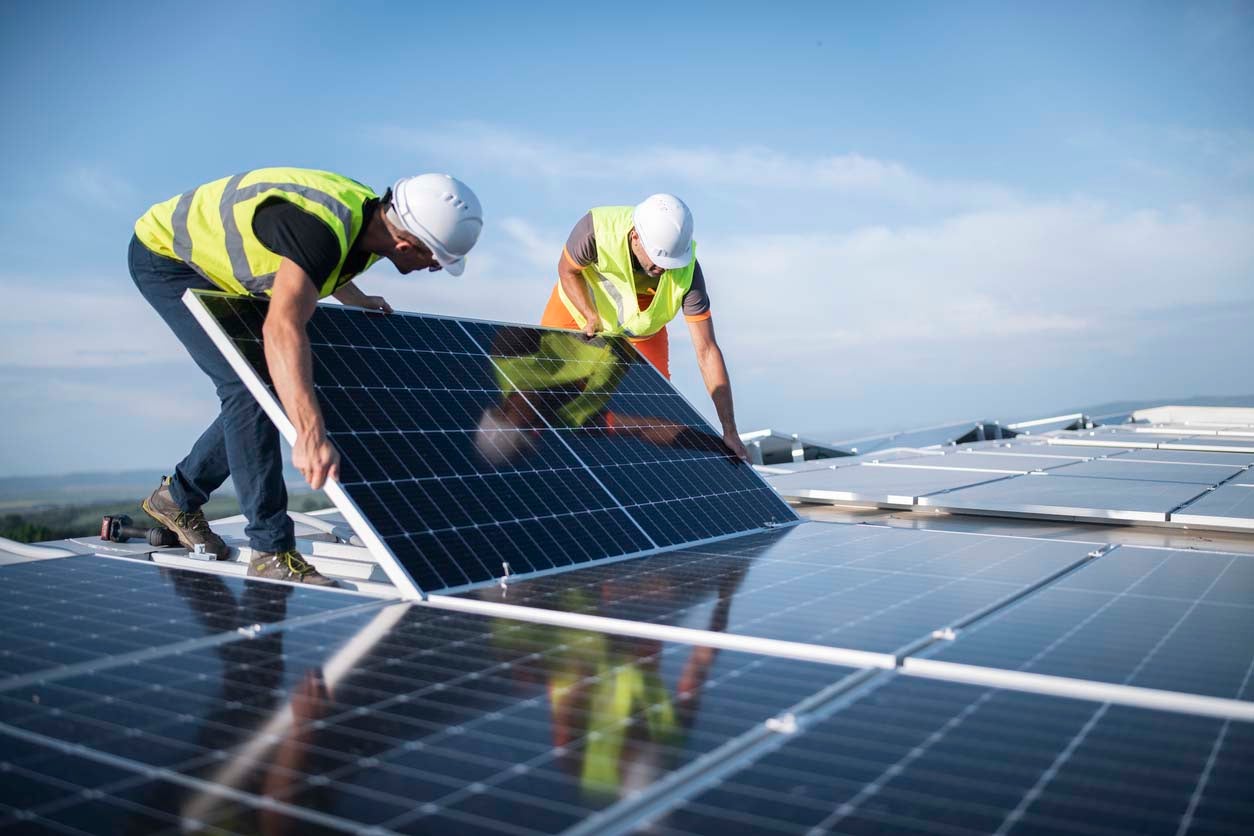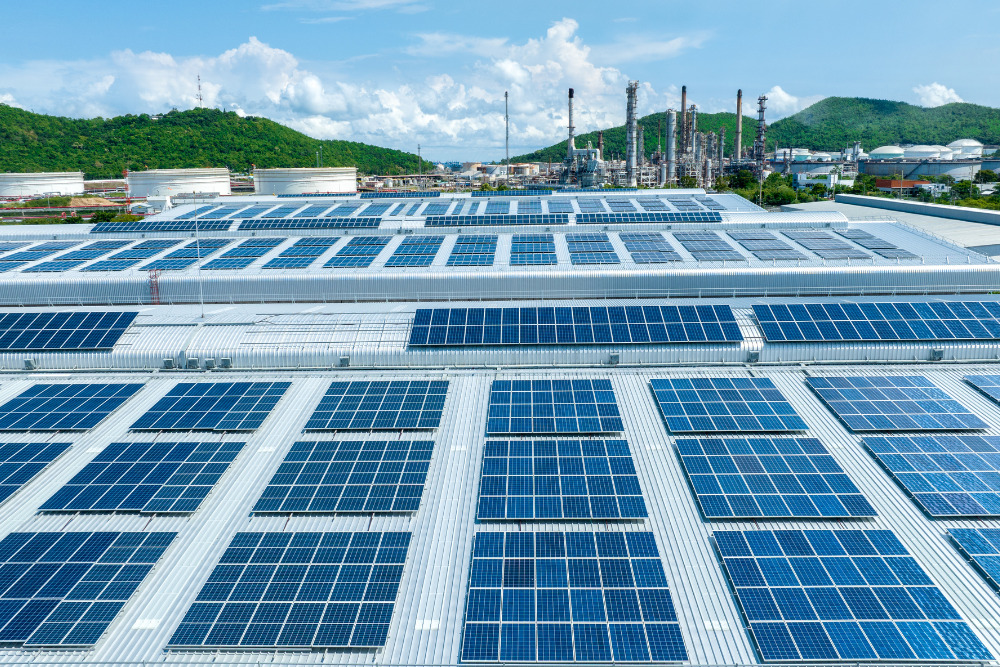8 Easy Facts About Solar Panel Company Virginia Shown
8 Easy Facts About Solar Panel Company Virginia Shown
Blog Article
Solar Panel Systems Virginia: Lumina Solar Specializes In Offering Advanced Photovoltaic Solutions For Homes And Businesses
History and Founding
Have you ever questioned how a photovoltaic panel company springs from a mere spark of inspiration into a powerhouse of renewable resource? It frequently starts with a vision-- one sustained by a mix of development, determination, and a pinch of serendipity. The journey of numerous solar business mirrors the evolution of the innovation itself: from large, inefficient panels to sleek, high-efficiency marvels harnessing the sun's bounty.
The Early Days
In the late 20th century, when solar power was still a niche concept, leaders planted seeds for what would end up being an international movement. Picture a little workshop filled with curious engineers, tirelessly explore solar batteries. Their passion was palpable, typically driven by a desire to fight environment change and decrease reliance on nonrenewable fuel sources.
One such anecdote has to do with a founder who, influenced by an outdoor camping trip, realized that even in remote locations, the sun might power necessary devices. This simple observation triggered a company's mission to democratize access to clean energy.
Establishing Concepts

- Innovation: Constantly pressing the limits of solar technology to improve performance and toughness.
- Sustainability: Committing to eco-friendly manufacturing and reducing carbon footprints.
- Availability: Making renewable resource services cost effective and useful for everyday users.
Turning points in Development
| Year | Secret Occasion |
|---|---|
| 1985 | Business established in a small garage, focusing on research study and development. |
| 1995 | First industrial photovoltaic panel product released, gaining local attention. |
| 2005 | Broadened to worldwide markets, welcoming international renewable resource objectives. |
| 2015 | Introduced cutting-edge photovoltaic panel technology with enhanced energy conversion. |
Isn't it fascinating how these incremental steps, often ignored, shape the energy landscape today? The photovoltaic panel business story is not almost innovation; it has to do with a relentless quest for a brighter, cleaner future.

Developments in Photovoltaic Panel Technologies
Ever discovered how some photovoltaic panels shine brighter and last longer? It's not magic; it's the science of photovoltaic effectiveness. Modern solar panel business invest greatly in technologies like bifacial cells, which catch sunlight here from both sides, boosting energy harvest without broadening roofing system area. Have you ever wondered why some panels carry out better on cloudy days? That's due to advances in thin-film solar technology, which prospers under diffused light conditions.
Item Variations Customized to Unique Needs
One size never ever fits all. Solar panel suppliers now provide:
- Monocrystalline panels for optimum efficiency and streamlined looks, perfect for space-constrained roofs.
- Polycrystalline panels, which offer an economical alternative without sacrificing too much output.
- Building-integrated photovoltaics (BIPV), combining solar tech seamlessly into architectural elements like windows and facades.
Selecting the best item isn't just about in advance cost; it's about matching your environment, energy objectives, and long-term cost savings. Homes shaded by trees need panels that excel in low-light scenarios, something lots of ignore till energy bills climb all of a sudden.
Technical Tips for Ideal Choice
- Assess the temperature level coefficient-- lower values suggest panels lose less efficiency on hot days.
- Try to find panels with boosted anti-reflective finishings to make the most of light absorption.
- Think about the panel's warranty not simply for flaws, however for guaranteed power output over years.
- Don't ignore the value of the inverter innovation coupled with the panels; it can make or break your system's performance.
Beyond Panels: Emerging Patterns
Imagine photovoltaic panels that adjust their angle instantly to chase after the sun-- tracking systems are ending up being more available, increasing yield substantially. Or solar tiles that mix undetectably into your roofline, transforming your home into a quiet, self-sufficient power generator. These innovations are improving what a solar panel company uses-- not just items, but integrated energy solutions.
Market Existence and Global Operations
Ever question why some photovoltaic panel business seem to sprout up in every corner of the globe while others barely make a ripple? The difference lies not just in innovation however in mastering the art of browsing varied markets. Broadening globally resembles planting seeds in various environments-- you need to understand each environment's special conditions to prosper.
Take, for circumstances, the detailed dance of logistics and supply chain management. Delivering panels midway across the world isn't almost distance; it has to do with timing, custom-mades, tariffs, and adapting to local need variations. A company with robust global operations expects these variables, guaranteeing panels get here on schedule without inflating costs. This insight is no little feat and often separates industry leaders from followers.
Key Techniques for Expanding Market Presence
- Localized manufacturing: Developing production centers near target audience lowers shipping delays and import complexities.
- Strategic collaborations: Working together with regional firms accelerates market penetration and constructs trust.
- Adaptive product style: Tailoring solar panel tech to weather, sun strength, and infrastructure subtleties enhances performance and acceptance.
What about the human element? Photovoltaic panel companies operating internationally need to fix up cultural differences and regulative subtleties without forgeting their core mission. What works in a sun-drenched desert might fail in a damp seaside region. Often, the most ingenious option is simply listening-- absorbing local insights to improve innovation and approach.
Professionals often encourage a phased rollout rather than a shotgun growth. Why run the risk of overextension when measured growth constructs sustainable momentum? Scaling sensibly implies balancing ambition with functional strength - Commercial Solar Panels Virginia. After all, in the race for sustainable energy dominance, persistence can be as important as speed
Environmental Effect and Sustainability Practices
When solar panels initially emerged, numerous presumed they carried absolutely no ecological luggage. Nevertheless, the truth is more nuanced. The production of solar batteries includes uncommon earth metals and energy-intensive processes, which can leave a large carbon footprint before the panels even reach roofs. The true environmental expense depends heavily on the sustainability practices employed by the photovoltaic panel business throughout the lifecycle of their products.
How typically do we pause to consider what occurs to solar panels at the end of their useful life? Unlike batteries or electronics, solar panels can last 25-30 years, however disposal and recycling paths stay underdeveloped in many areas. A business dedicated to lowering environmental damage will have a robust plan for recycling photovoltaic materials, salvaging important silicon, glass, and metals to avoid garbage dump build-up.
Secret Sustainability Methods
- Utilizing low-impact manufacturing methods that lessen water and energy intake.
- Carrying out closed-loop systems to recycle production waste back into brand-new panels.
- Participating in transparent supply chain audits to make sure ethical sourcing of basic materials.
- Designing panels for simpler disassembly to aid future recycling efforts.
It deserves keeping in mind that some solar companies have originated innovative approaches, such as incorporating eco-friendly elements or using less hazardous chemicals throughout fabrication. This not only decreases ecological strain but also sets a precedent for the industry. The concern stays: can the solar industry genuinely pivot towards a circular economy model without sacrificing efficiency or price?
Professional Tips for Assessing Sustainability
- Inquire about the company's dedication to carbon-neutral manufacturing and whether they balance out emissions.
- Investigate if they partner with licensed recycling centers devoted to photovoltaic panel waste.
- Look for transparency reports detailing environmental impacts and sustainability objectives.
- Think about the durability and guarantee of panels as an indirect procedure of resource effectiveness.
In the end, opting for solar power needs to imply more than simply slashing electrical energy bills; it's about supporting a future where energy is gathered responsibly and waste is thoughtfully managed. Photovoltaic panel business that embrace this approach not only brighten homes however also cast a brighter light on sustainable innovation.
Report this page